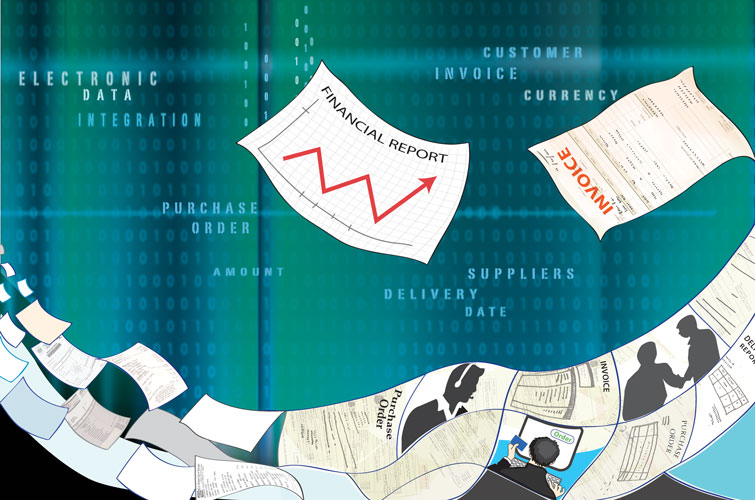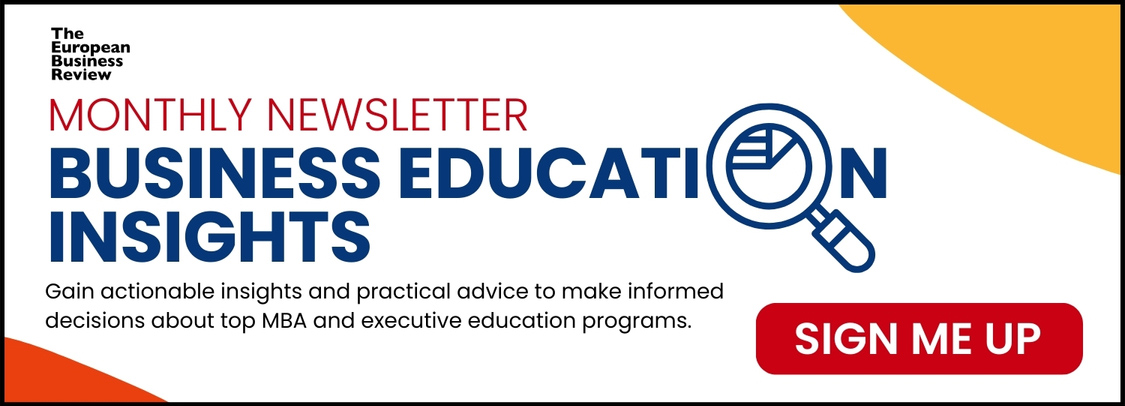By Steve Hill
In his 2010 study into business-to-business payment processes, Alessandro Perego said that electronic invoicing was a “competitiveness lever.”
His study, which was carried out on behalf of the Milan School of Management, also claimed that electronic invoicing presented a tremendous opportunity to optimise both company and inter company processes.
His findings came from a survey of 3,000 businesses in Europe and concluded that implementing electronic document exchange means that organisations can save up to €65 per procurement cycle, a procurement cycle being:
Steve Hill, Business Development Manager of First B2B, thinks that although studies like this help encourage businesses towards electronic integration, there is too much focus on solely operating with electronic invoices. This, he says, is hindering them: “The problem businesses in Europe now find themselves in is that the electronic integration isn’t across the board. There is too much focus on the invoice itself – which is the end point – there’s a raft of processes prior that provide an opportunity for businesses to save both time and money. Often organisations quote the savings of €65 per invoice, when, as this study shows, the savings are only around €5 per invoice if all you do in electronic invoices, this leads to a disappointing return on investment.”
It’s because of this problem that Steve and his UK based business First B2B are pioneering true EDI (electronic data integration) systems in ‘The Cloud’ that will ease the transactional and financial side of businesses, instead of just Software as a Service, Business Process as a Service. Steve continues, ‘Electronic invoicing is nothing new, retailers throughout Europe have been implementing it very successfully since the early 1980s, it was originally called EDI. The difference is that the retailers recognised that the starting point for good quality invoicing was good quality purchasing and so they implemented Purchase Orders and Invoices as electronic documents. They are now expanding this into areas such as electronic delivery notes.’
This is referred to again in the Milan School of Management research. Perego claims that “full trade process integration”, whereby the full order-to-invoice cycle is conducted electronically, is crucial.
Steve continues: “So the starting point for your business when investing in Electronic Invoicing should be an investigation of your entire procure to pay process. How do you currently buy goods and services, do you use purchase orders, do you match invoices to purchase orders before approval, do you all match invoices to goods receipts before approval? These things matter because at that point you can access the true cost to your business of a procurement.”
“At First B2B, our starting point is to work with our customers on this review of procurement processes. It may take a little time but it often throws up savings, even before implementing electronic document exchange. For example, we were involved with one organisation that matched all invoices to both purchase orders and goods receipt notes in a manual process. They chose one supplier and reviewed the costs of matching to the Goods receipt note as against the savings found due to the invoice not matching those goods received. They found that in a single fiscal year, for this one supplier the cost to match against goods received was €60,000, the total savings found were €5,500. In other words the savings by using this process were -€54,500. The answer they came up with was to stop reviewing each invoice against each receipt, but rather to spot check, agreeing with the supplier that if the spot check found a discrepancy in excess of a certain percentage then the supplier would issue a credit note for that percentage against the previous quarters invoices. Of course others would use the same information and simply instruct suppliers to invoice only upon receipt of an electronic goods receipt note, the result is the same, vastly reduced costs for processing invoices.
“Once you have established what your procurement process is, and where you can make savings, then certainly start with electronic invoices if that fits, but understand that this is the first step to your ultimate goal, not the goal itself.”
Steve also identifies other issues which affect the transactional processes between customers and suppliers, most notably the slow take up of full electronic invoices across businesses. This was noted again within Perego’s report for the Milan Institute of Management which identified a difficulty in “multi company collaboration.”
Continuing on this theme, Steve explains: “Even though sending an electronic invoice should be a relatively simple task for a supplier, the customer needs to understand that it will sometimes require a change to the IT systems of the suppliers or the purchase of specialist software. Furthermore, although the legal requirements for an invoice throughout Europe are almost the same, different industries require different information from suppliers on invoices, sometimes different companies within the same industry require different information. This is to be expected within a free market. However that will mean that suppliers can have a harder task to comply with many differing customer requirements.
Steve and First B2B’s solutions are to take a number of steps that are simple for companies to adopt. He explains: “If we want electronic invoicing to properly take off we need several things.”
“We first need to talk with the client to obtain an absolute understanding of their business process as above. This should be undertaken before any decision to proceed. As with any implementation of an IT system, there must be a benefit for the business from the investment. Sometimes this investigation may find that for your organisation, the benefits will not be present as they will not suit your processes. As an example, just over a year ago we undertook just such an exercise with a well-known brand name and found that, after reviewing the processes, the costs involved in those processes and the potential savings, there was no significant benefit to that business in implementing electronic document exchange with their suppliers. So both companies agreed that we would not continue, saving large amounts of time and effort for all parties.”
“We need to then engage cooperatively with the suppliers, not as some have tried to do by forcing the suppliers down a particular route – be that a fixed data format or communications platform or even worse forcing the supplier to pay for the privilege of delivering their invoices to you. All of these are barriers to adoption and therefore barriers to your return on investment.”
There are a range of possibilities available to then engage with the suppliers to receive their electronic invoices and First B2B uses an inverted pyramid to show the options available. Each option has benefits and drawbacks as Steve explains.
“The best and biggest return on investment is always found with the ‘Full Integration’ option. Realistically not all your suppliers will be able to achieve this from day one, but, by liaising with your suppliers, you should be aiming to get the majority of your biggest suppliers (by invoice volume) to be in this section of the pyramid. This section of your solution should contain the vast majority of your procurements, aiming for at least 70%. Always remember that by implementing full integration there are benefits for the suppliers as well as the customer, for example automated Purchase Order processing, fewer invoice payment delays due to fewer discrepancies, fewer credit notes for the same reason. These benefits will all have a financial gain for the supplier.”
The next level is scan to data. With this technology the data is extracted from either a PDF invoice sent by the supplier or from a paper invoice using Optical Character Recognition (OCR) technology. The data is then converted into a structured electronic for that can be used by the customers system. This technology may sound like the perfect solution but it has limitations, as Steve Hill explains. “Scan to Data will present some issues around the quality of the data received and may lack some of the data that the Full Integration can achieve. However, if the Purchase Order is also part of the electronic business process we can often enhance the data on an invoice by merging it with data from a purchase order, so increasing the value of such invoices. Scan to Data has its place in the complete solution, especially as a stop gap to allow suppliers to comply until their systems can accommodate electronic invoicing, but as a customer you should expect more manually intervention from your employees. Scan to data should take up to 20% of your procurements, much more than that and you may have data quality issues that become a burden to your business.”
The final part of the equation is the portal approach. Depending on how it is implemented this is of value to suppliers that send very low to medium volumes of invoices. The portal provides an easy way for suppliers to comply with the customers electronic document requirements, in the case of the First B2B portal allowing suppliers to receive purchase orders, produce electronic delivery notes and invoices.
Steve Hill believes the portal approach can again help those suppliers that cannot comply or that cannot comply with electronic integration until a future date. “The portal does provide the supplier with some extra work, creating invoices in both their own accounting system and the portal. However if correctly implemented can offer benefits such as knowing the invoice matches the purchase order, knowing it will comply with the customers requirements, and in the case of First B2B knowing the customer has received your invoice. We have suppliers using the portal to deal with major retailers in the UK and invoicing from one invoice per month to thousands of invoices per month depending upon their requirement, but the important point is they are complying with their customers requirements.
Steve’s final thoughts lie in businesses’ fixation with solely implementing electronic invoicing and disregarding the wider financial and transactional chain between businesses: “Most business’ payments are now electronic such as Swift or BACs so really electronic invoicing is just the end point and really we should be looking at the chain leading to this. Unfortunately most focus from IT suppliers in this market has been on marketing the Electronic Invoice as the solution. Why, because it is the easiest for them to implement, far easier than understanding the business process of the customer. Implementing full procurement integration was recognised some time ago by the major retailers as the way to go and they implemented it, and still implement it, with technology that is decades old. As Alessandro Perego highlights, full integration is what all businesses should be aiming for, unfortunately the focus on purely electronic invoicing may have set us back several years.” “It’s the whole process that will derive the maximum benefit for your business. Its crucial that you consider this if you want to get to the €65 per invoice saving that Perego’s report claims you can. In the current world economic climate, the difference between €65 and €5 can be significant for some organisations. As an example, if you only receive 100,000 invoices per annum the difference in savings is between €6,500,000 and €500,000 per annum. Even if the savings from full integration were reduced to 20% of those quoted, can a business ignore potential savings of €1,300,000 as opposed to €500,000.
About the author
First B2B is based in Derbyshire in the UK and services clients across the globe, translating and transporting electronic document messages to and from major companies all over the world on behalf of its clients. Their fully managed solutions allow any size of organisation to trade electronically with their customers and suppliers.





































